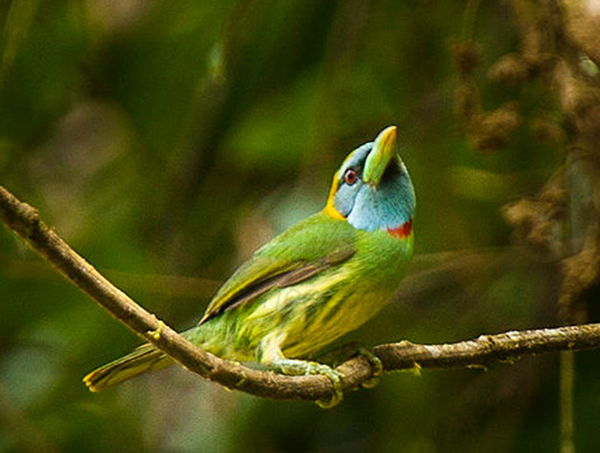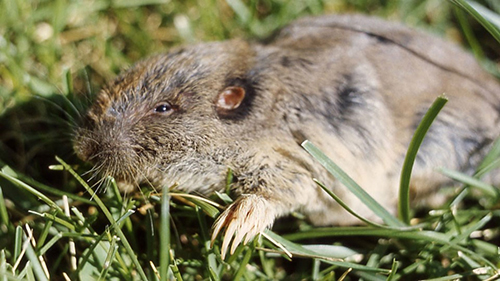
Credit: Francesco Veronesi (CC BY-SA 2.0 [https://creativecommons.org/licenses/by-sa/2.0]), via Wikimedia Commons
Scientists have been watching 1,000 species of mountain animals and plants around the world to see how they react to a warming climate.
They’ve found that as annual temperatures climb, many species have climbed, too. On average, for every one-degree-Celsius increase, mountain-dwelling species shifted 100 meters upslope.
Because the mountains narrow as they go up, this means a shrinking habitat for those species, and often a dramatic drop in population.
For instance, butterflies in the French Pyrenees and gophers in Nevada’s Ruby Mountains have lost 70 to 80 percent of their range, as suitable habitat shifted up the slope.
Birds on one mountain in the Peruvian Andes moved 250 meters up over the past 30 years in response to a change of just one degree.
Some of the migrating species are soil microbes, which, as they move upslope, may allow tree species to move up with them. In these cases, the treeline could rise, supporting forest species on their upward climbs.
But as the climate continues to warm, earthbound species like trees, crawling insects, and mammals will eventually run out of mountain. If they can’t adapt to the warmer temperatures, they may die out.
Birds and flying insects would be able to fly to higher ridges and mountaintops—as long as there are higher ones in the region.
Regardless of cause, these are effects we can measure and observe today: plants and animals the world over are migrating to adjust to a warming climate.
Background
Synopsis: What happens when climate change forces species to move? In the plains, crop-hardiness zones are shifting steadily poleward. But the stakes are higher as temperatures rise in mountainous regions. Studies show that trees and the soil microbes that support them are moving upslope, as are birds. What happens when they run out of mountain? If it’s the highest mountain in the region, it could mean extinction.
- Recent studies show that plant-hardiness zones in U.S. plains areas have been moving steadily north at about 13 miles per year. But what happens to species as temperature climbs in a mountainous environment?
- New studies have shown that as temperatures rise, the soil microbiome may support baby trees venturing upslope from established populations.
- Scientists studied 975 populations of plants, insects, and animals worldwide. Some moved upslope with temperatures, while others moved downslope aligned with precipitation; still others stayed put.
- Researchers have shown that for each 1.8oF (1oC) change in temperature, some mountaintop species migrate 328 ft (100 m) upslope.
- As species move upslope, their ranges become smaller and smaller, creating competition with species already inhabiting those ranges and upending the former balance of the ecosystem with permanent consequences.
- A change of just 2–3oF (1–2oC) in temperature caused the following reactions:
- Pocket gophers in the Ruby Mountains of Nevada lost 70 percent of their inhabited area over 80 years.

Credit: National Park Service
- The mountain burnet butterfly lost 79 percent of its range as it shifted 1,400 ft (430 m) upslope in the French Pyrenees.
- A Himalayan meadow flower moved upslope nearly 2,000 ft (600 m) over the past 150 years, losing 29 percent of its range.
- Once they arrive at the top of their mountain, some organisms can’t go any further. While birds and insects can fly to the next ridge, other creatures may not have that choice.
- Birds on Cerro de Pantiacolla in the Peruvian Andes have been moving upslope over the past 33 years—more than 800 ft (250 m)—in response to an approximately 1oF (0.43oC) temperature change. Five “ridgetop specialist” species that lived on the mountain’s crest are no longer found there, while other species have shifted their ranges dramatically.
- Cerro de Pantiacolla is only 4,642 ft tall. Although the five species disappeared from this particular mountain, they are not extinct; they still exist on taller surrounding mountains. This disappearance from a habitat is called extirpation if the species moves elsewhere.
- Today, plants and animals all over the world are migrating as they adjust to a warming climate.

